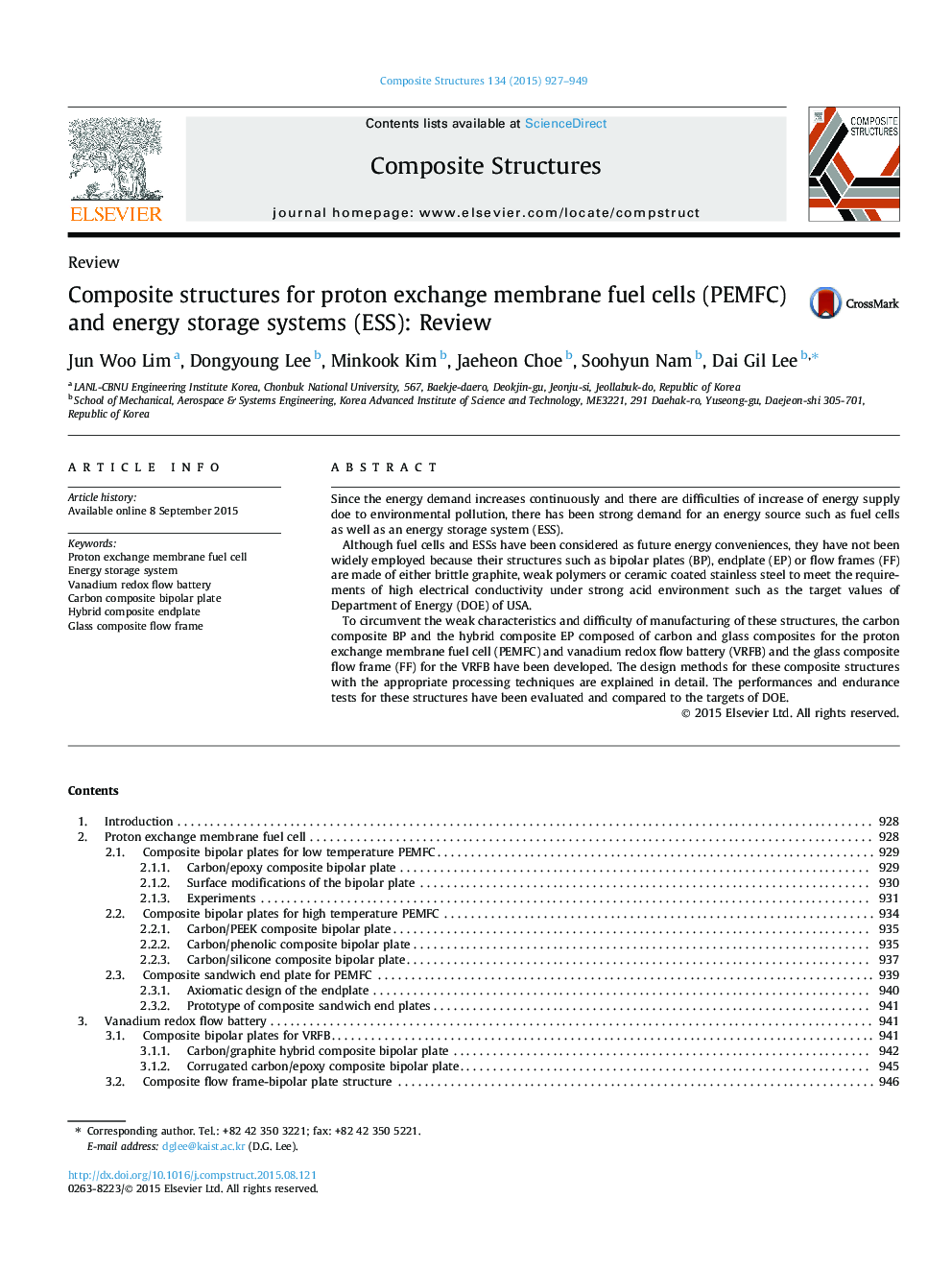| Article ID | Journal | Published Year | Pages | File Type |
|---|---|---|---|---|
| 251053 | Composite Structures | 2015 | 23 Pages |
Since the energy demand increases continuously and there are difficulties of increase of energy supply doe to environmental pollution, there has been strong demand for an energy source such as fuel cells as well as an energy storage system (ESS).Although fuel cells and ESSs have been considered as future energy conveniences, they have not been widely employed because their structures such as bipolar plates (BP), endplate (EP) or flow frames (FF) are made of either brittle graphite, weak polymers or ceramic coated stainless steel to meet the requirements of high electrical conductivity under strong acid environment such as the target values of Department of Energy (DOE) of USA.To circumvent the weak characteristics and difficulty of manufacturing of these structures, the carbon composite BP and the hybrid composite EP composed of carbon and glass composites for the proton exchange membrane fuel cell (PEMFC) and vanadium redox flow battery (VRFB) and the glass composite flow frame (FF) for the VRFB have been developed. The design methods for these composite structures with the appropriate processing techniques are explained in detail. The performances and endurance tests for these structures have been evaluated and compared to the targets of DOE.
